For gardeners with limited space or those who want the flexibility to move their roses around, planting roses in planters is a great option. Interested in learning about some of the best rose planters? You've come to the right page, then! In order to best serve your needs, we did extensive research and came up with this information.
The following are the best planters for roses:
- Terra Cotta Planters
- Wooden Planters
- Cast Iron Planters
- Fiberglass Planters
- Wrought Iron Planters
- Concrete Planters
In this article, we’ll discuss each of these planters mentioned above in detail. We'll also give you some advice on what to think about while picking a planter. There is more information to come, so keep reading.
What Are The Best Planters For Roses?
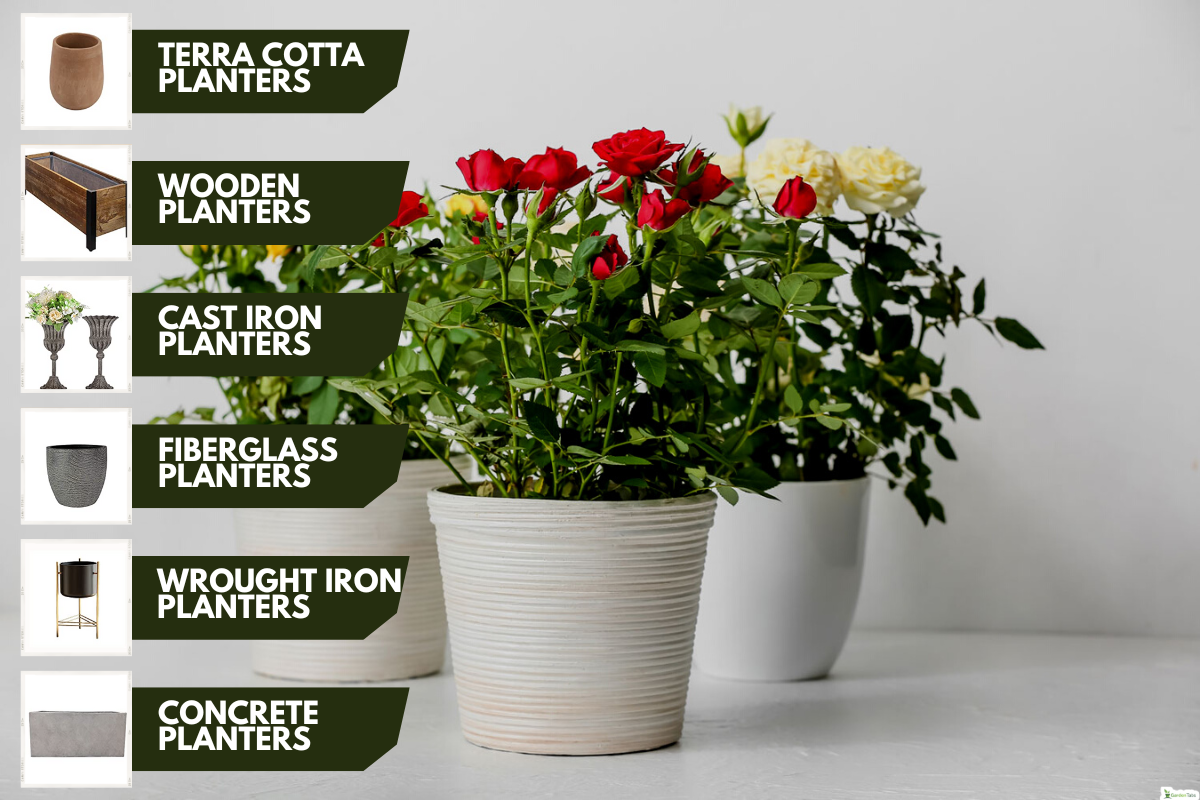
Planters are containers created to accommodate different kinds of live plants and enable the placement of the plants as part of the overall décor of a home or office. Today's planters come in a huge variety of designs and materials. It can be as simple as a pot for a single plant or as huge as a box-shaped structure.
For roses, growing in planters is a chic way to enliven outdoor areas. This will create a focal point in your garden or spruce up your decks, patios, and entryways with vibrant colors and fragrant blooms.
The best planters for roses depend on the specific needs of roses and the location where they will be planted. Here are a few of the best rose planters to check out.
Terra Cotta Planters
These planters are made from clay and are a popular choice for roses because they are breathable, allowing for proper drainage and aeration of the roots. They also have a natural, rustic appearance that complements the beauty of the roses.
Click here to see this terra cotta planter on Amazon.
Wooden Planters
They are another popular option for roses. They provide good drainage and aeration, and they also have a natural look that complements the roses. However, since they are wood, they should be treated with a sealant to protect them from water damage.
Click here to see this wooden planter on Amazon.
Cast Iron Planters
These planters are heavy, durable, and have a classic look. They retain heat, which can be beneficial for roses in cooler climates.
Click here to see these cast iron planters on Amazon.
Fiberglass Planters
These planters are lightweight, durable, and come in a wide range of colors and styles. They are also resistant to rot and insects, making them a great choice for outdoor use.
Click here to see this fiberglass planter on Amazon.
Wrought Iron Planters
These planters are sturdy and elegant, which can add a touch of classic beauty to any garden. They are also rust-resistant, making them a great choice for outdoor use. But some of these kinds of planter needs to have lining such as burlap to stabilize the bottom.
Click here to see this wrought iron planter on Amazon.
Concrete Planters
Concrete planters are heavy, durable, and long-lasting. They are also resistant to weather, making them a great choice for outdoor use.
Click here to see this concrete planter on Amazon.
What Factors Should You Take Into Account When Choosing Rose Planters?
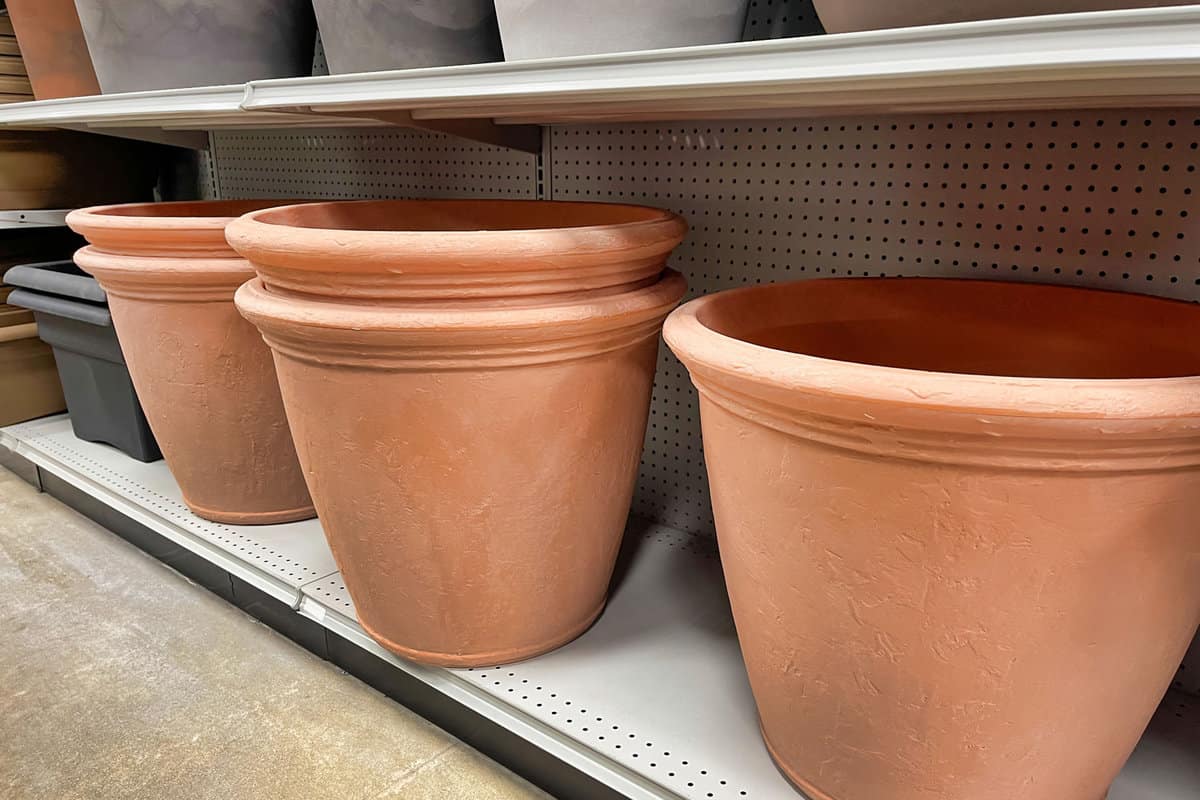
Here are some things to think about when selecting a planter for your roses. It's crucial that it best suits both your demands and the needs of your roses.
Size
The size of the planter is an important factor to consider when choosing a planter for your roses. Roses need room to grow, so make sure the planter is large enough to accommodate the mature size of the rose bush.
A general rule of thumb is to choose a planter that is at least 2-3 times the size of the rose's root ball. This will give the roots enough space to spread out and grow.
Drainage
Good drainage is essential for the health of your roses. To prevent root rot, check that the planter's bottom has drainage holes that will let excess water run out. If the planter does not have drainage holes, you can drill some or use a layer of gravel at the bottom of the pot to aid in drainage.
Material
Planters can be made from a variety of materials such as those mentioned above. Consider the material that will best suit your needs, for example, terra cotta or clay pots are porous and can dry out quickly, and ceramic pots are durable but heavy and expensive.
Color & Design
The planter should complement the design of your garden and the color of the roses. For example, if you have a traditional garden, a classic terra-cotta pot would be a good choice.
If you have a modern garden, a sleek metal planter would be a better fit. Also, if you want to make your roses stand out, you can choose a contrasting color for the planter.
Weight
Consider the weight of the planter when it's filled with soil and water, if you plan to move it around your garden. If you want to move the planter around your garden, such as to change the location of the roses to suit the season, or to make way for other plants, you should choose a lightweight planter.
Durability
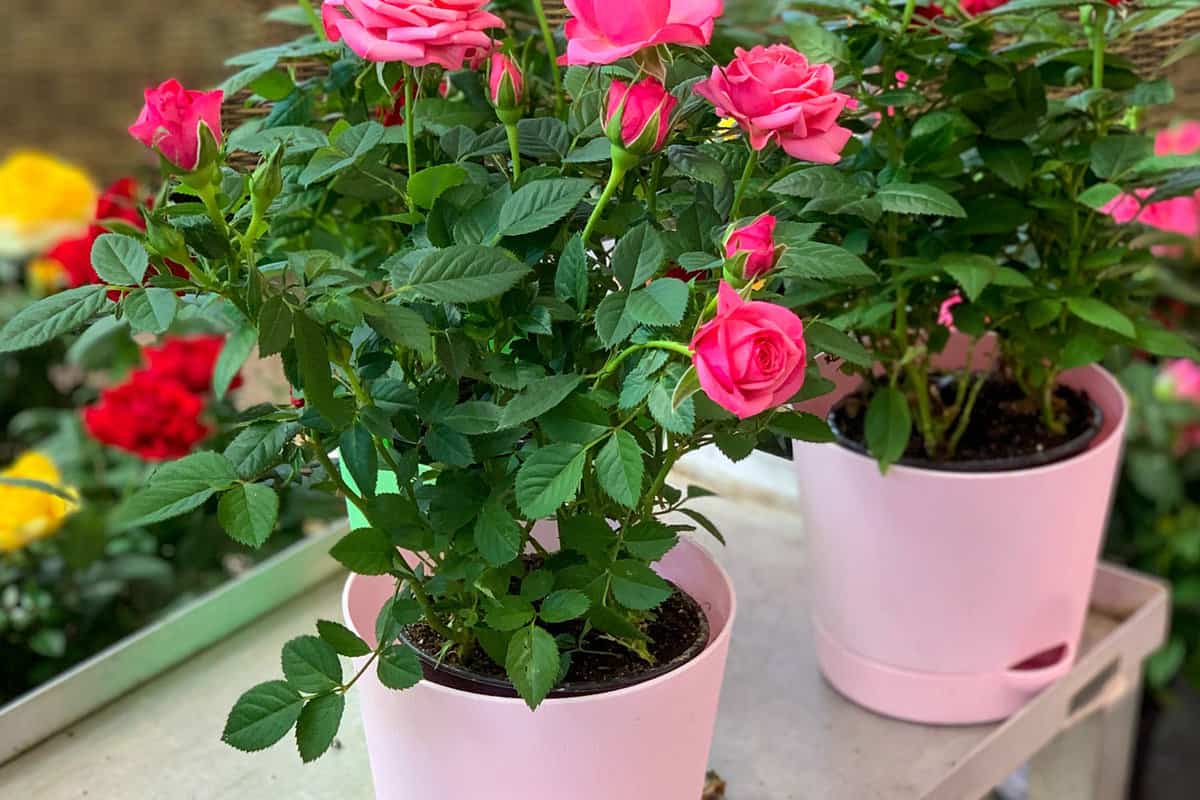
Consider the durability of the planter. Some materials like plastic, metal, and fiberglass planters can last for many years. While some like terra cotta, clay, or wooden planters may last for a shorter period.
Cost
The cost is also a factor to consider. Some materials like plastic, metal, or fiberglass planters are relatively inexpensive, while others like ceramic, terra cotta, or wooden planters can pricer.
Rose Varieties
Roses in miniature sizes work best in containers. Always use caution when choosing a plant since the size of the leaves and blossoms on miniature roses, which frequently come in small pots, can be deceiving when used to predict the size of the plant in the future.
Can Roses Be Grown In Plastic Pots?
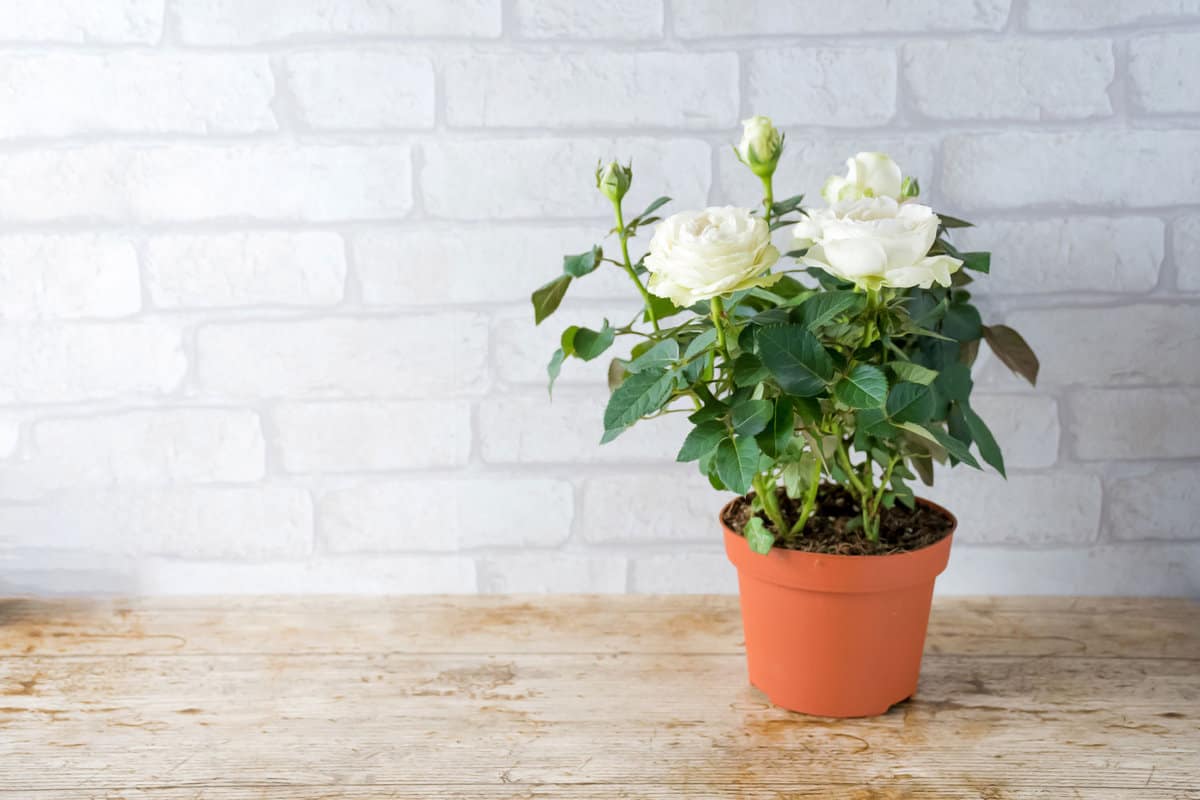
Plastic planters can be a good option for roses, as they are lightweight, inexpensive, and come in many different colors. However, there are a few things to keep in mind when using plastic planters for roses:
Heat
Plastic planters can get very hot in direct sunlight, which can be harmful to the roots of the roses. To mitigate this, you can place the plastic planter in a shaded area or use an insulating material, such as a layer of bubble wrap, to help keep the roots cool.
Click here to see this bubble wrap on Amazon.
Ultraviolet (UV) Light
Some plastic planters can degrade over time when exposed to UV light, which can make them brittle and prone to cracking. To extend the life of your plastic planter, you can store it in a shaded area when not in use.
Durability
Plastic planters can be durable, but they may crack or become brittle over time. They may not be as long-lasting as some other types of planters, such as ceramic or terra cotta.
Drainage
Some plastic planters may not have proper drainage holes or the holes may be too small, you can add drainage holes to the bottom of the planter or use a layer of gravel at the bottom of the pot to aid in drainage.
Aesthetics
Plastic planters may not have the same aesthetic appeal as other materials, like ceramic or terra cotta.
Click here to see this plastic planter on Amazon.
It is worth noting that plastic planters are a good option for roses, but they are not the only orr the best option. No matter what planter you choose, the important thing is you are aware of the potential issues of it and take steps to mitigate them.
How To Keep The Roses Healthy?
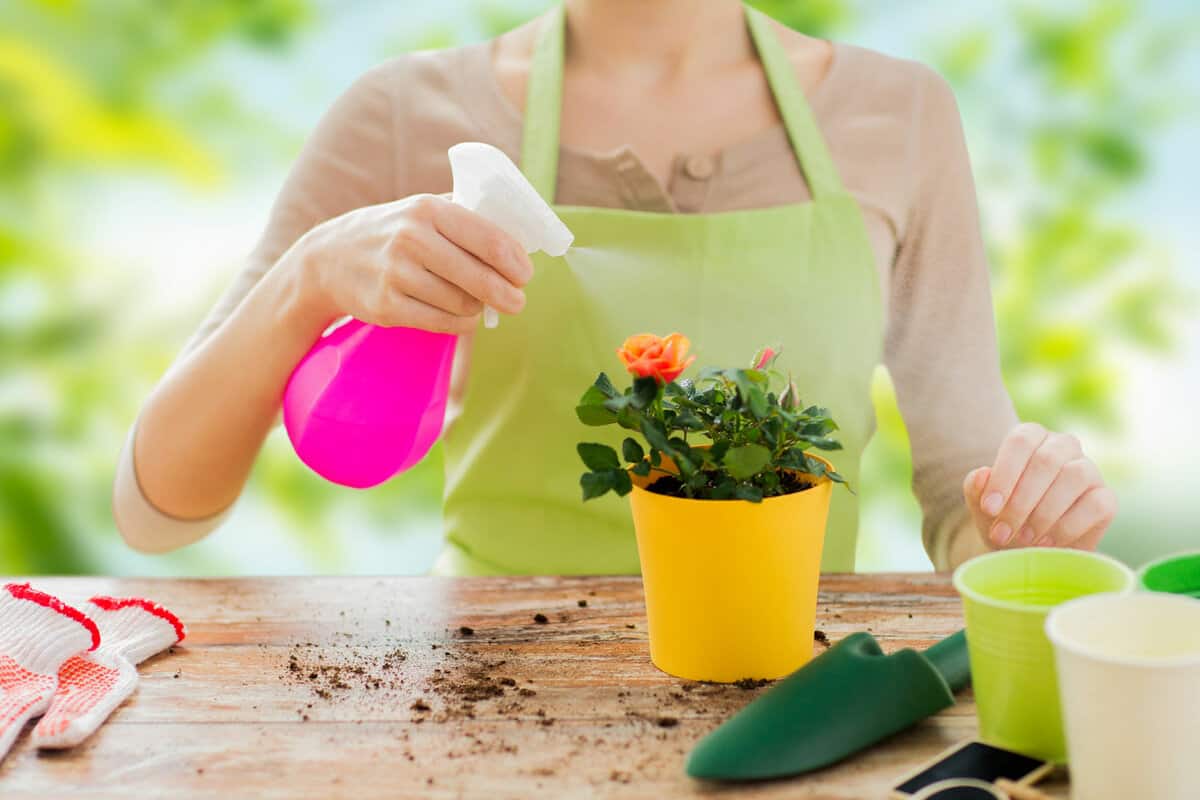
Roses require consistent care and attention to thrive, but with the right care, they can be beautiful and healthy. Here are some tips to keep roses healthy:
Planting
Choose a location that gets at least 6 hours of direct sunlight per day and has well-draining soil. Plant the roses at the same depth they were growing in the nursery container, and be sure to space them adequately to allow for good air circulation.
Watering
Water the roses deeply and regularly, making sure the soil stays consistently moist but not waterlogged. Avoid overhead watering, as this can lead to disease.
Fertilizing
Feed the roses with a balanced fertilizer, such as a 10-10-10 NPK (nitrogen-phosphorus-potassium) ratio, every 4-6 weeks during the growing season. Avoid over-fertilizing, which can lead to lush foliage but few blooms.
Click here to see this 10-10-10 fertilizer on Amazon.
Pruning
Prune the roses regularly to remove dead or diseased wood. Pruning roses in the early spring should be done with the knowledge that increased light and air circulation will result from opening the center of the plant or shrub. If more light and air are allowed to access the plant's center, it will be less likely for fungal diseases to develop.
Pest & Disease Control
Keep an eye out for common rose pests and diseases such as blackspots, powdery mildew, aphids, and Japanese beetles. Use insecticidal soap or neem oil for insect control and a fungicide for disease control.
Click here to see this neem oil on Amazon.
Regular Maintenance
Keep an eye on the roses, and take care of any issues as soon as they arise. Regularly check the roses for pests and diseases, and keep the area around the roses clean and free of debris.
Conclusion
There are many planters that are suitable for roses. But you should always make sure the planter you pick has the features the rose needs to live such as drainage holes and the appropriate size for the rose variety you're growing.
Have a look at the additional topics below that can teach you more about roses.










